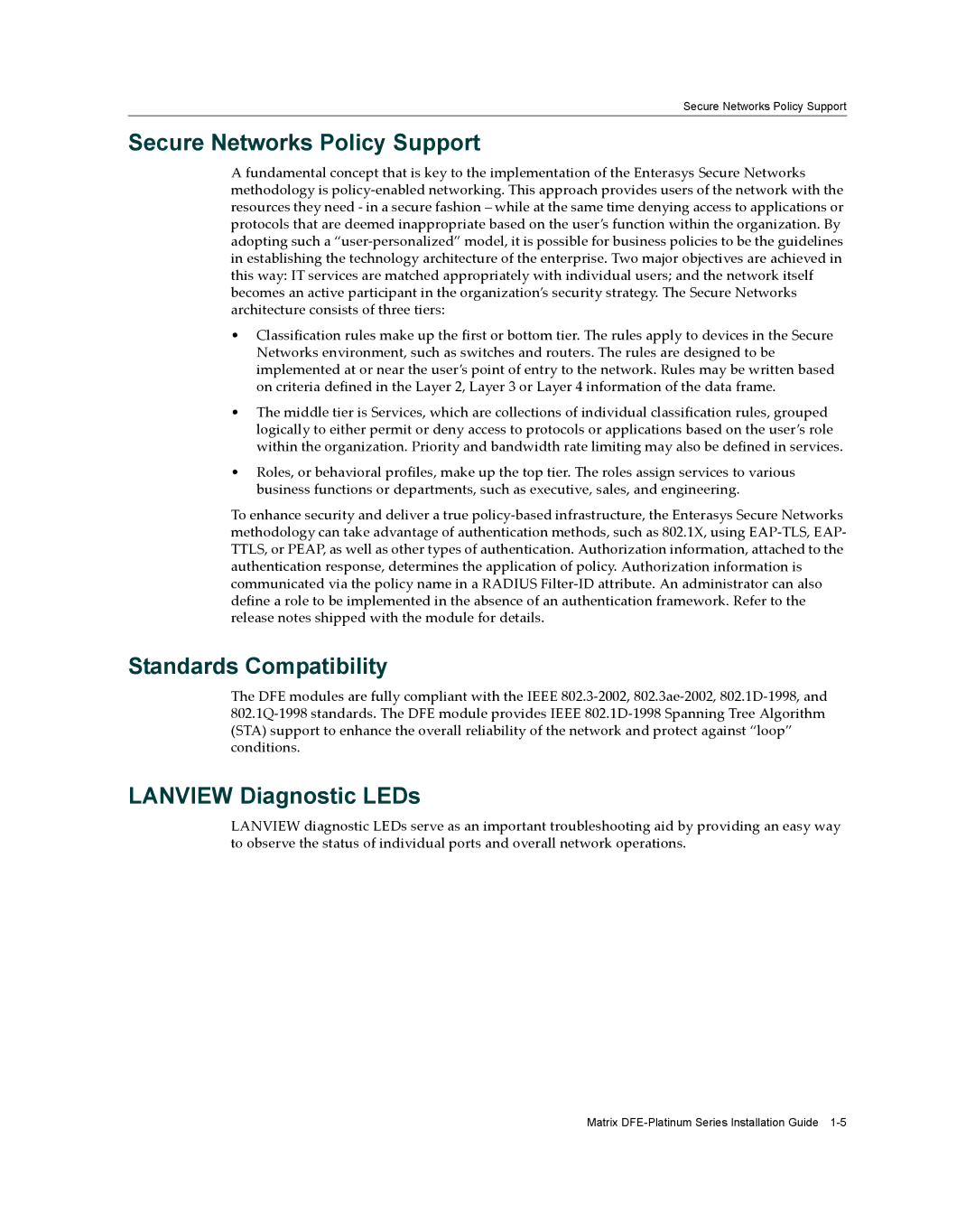Secure Networks Policy Support
Secure Networks Policy Support
A fundamental concept that is key to the implementation of the Enterasys Secure Networks methodology is policy‐enabled networking. This approach provides users of the network with the resources they need ‐ in a secure fashion – while at the same time denying access to applications or protocols that are deemed inappropriate based on the user’s function within the organization. By adopting such a “user‐personalized” model, it is possible for business policies to be the guidelines in establishing the technology architecture of the enterprise. Two major objectives are achieved in this way: IT services are matched appropriately with individual users; and the network itself becomes an active participant in the organization’s security strategy. The Secure Networks architecture consists of three tiers:
•Classification rules make up the first or bottom tier. The rules apply to devices in the Secure Networks environment, such as switches and routers. The rules are designed to be implemented at or near the user’s point of entry to the network. Rules may be written based on criteria defined in the Layer 2, Layer 3 or Layer 4 information of the data frame.
•The middle tier is Services, which are collections of individual classification rules, grouped logically to either permit or deny access to protocols or applications based on the user’s role within the organization. Priority and bandwidth rate limiting may also be defined in services.
•Roles, or behavioral profiles, make up the top tier. The roles assign services to various business functions or departments, such as executive, sales, and engineering.
To enhance security and deliver a true policy‐based infrastructure, the Enterasys Secure Networks methodology can take advantage of authentication methods, such as 802.1X, using EAP‐TLS, EAP‐ TTLS, or PEAP, as well as other types of authentication. Authorization information, attached to the authentication response, determines the application of policy. Authorization information is communicated via the policy name in a RADIUS Filter‐ID attribute. An administrator can also define a role to be implemented in the absence of an authentication framework. Refer to the release notes shipped with the module for details.
Standards Compatibility
The DFE modules are fully compliant with the IEEE 802.3‐2002, 802.3ae‐2002, 802.1D‐1998, and 802.1Q‐1998 standards. The DFE module provides IEEE 802.1D‐1998 Spanning Tree Algorithm (STA) support to enhance the overall reliability of the network and protect against “loop” conditions.
LANVIEW Diagnostic LEDs
LANVIEW diagnostic LEDs serve as an important troubleshooting aid by providing an easy way to observe the status of individual ports and overall network operations.
Matrix
